Shooting in Dubrava, Zagreb: One Person Injured after Shooting at Residential Building
January 6, 2021 – At 1:50 pm today, Zagreb police received a report of a shooting in Dubrava. Namely, someone shot at a residential building, and one man was injured.
As the Zagreb police confirmed for Večernji list, they received a shooting report today, January 6, 2020, at 1:50 pm. As they say, someone shot at a residential building in Dubrava, in which, they explain, one adult was injured.
It is not yet known how old the injured person is, nor what the injuries are. The injured man was transported to the Clinical Hospital Center Zagreb, where he is being treated.
A part of the Južna Street in Dubrava where the shooting took place is currently blocked, and the police are on the ground. They have begun conducting an inspection and a criminal investigation to determine all the circumstances of the incident.
Južna Street becomes impassable, and the crowds are forming. Neighbors have come out to their windows and balconies and are waiting for further developments.
"Everything was calm, and then suddenly a shot was heard," neighbors told Večernji List.
Although the police have been warning for days that the use of pyrotechnics and firearms during the Christmas and New Year holidays can be fatal, their warnings do not fall on fertile ground. During New Year's Eve, five people were seriously injured due to the unprofessional handling of pyrotechnics and firearms. Some of them had their fingers amputated due to firecracker explosions.
Police later criminally reported several people across the country for firing firearms during the Christmas and New Year celebrations, recording it and posting the footage on social media. The investigation will show whether the shooting in Dubrava was the product of an inappropriate celebration of today's Three Kings holiday or something else.
More information about the incident will be known after the investigation finishes.
To read more news from Croatia, follow TCN's dedicated page.
Meet Zagreb Volunteers, the Heart and Soul of the City
October 29, 2020 - TCN joins Zagreb Volunteers Centre in Čučerje to find out who are the Zagreb volunteers and why they do what they do. Čučerje is a semi-rural community which lies at the epicentre of the March 2020 earthquake.
By the time we ran out of the building, the first tremor had stopped. At 6:25am, the asphalt road lay quiet and motionless. People in pyjamas, nightgowns or underwear stood on the pavement. Others emerged even later. Although masonry in other parts of the city continued to fall, the 5.5 magnitude earthquake that visited Zagreb on 22 March 2020 was over. It had lasted much less than a minute. Its repercussions would last much longer.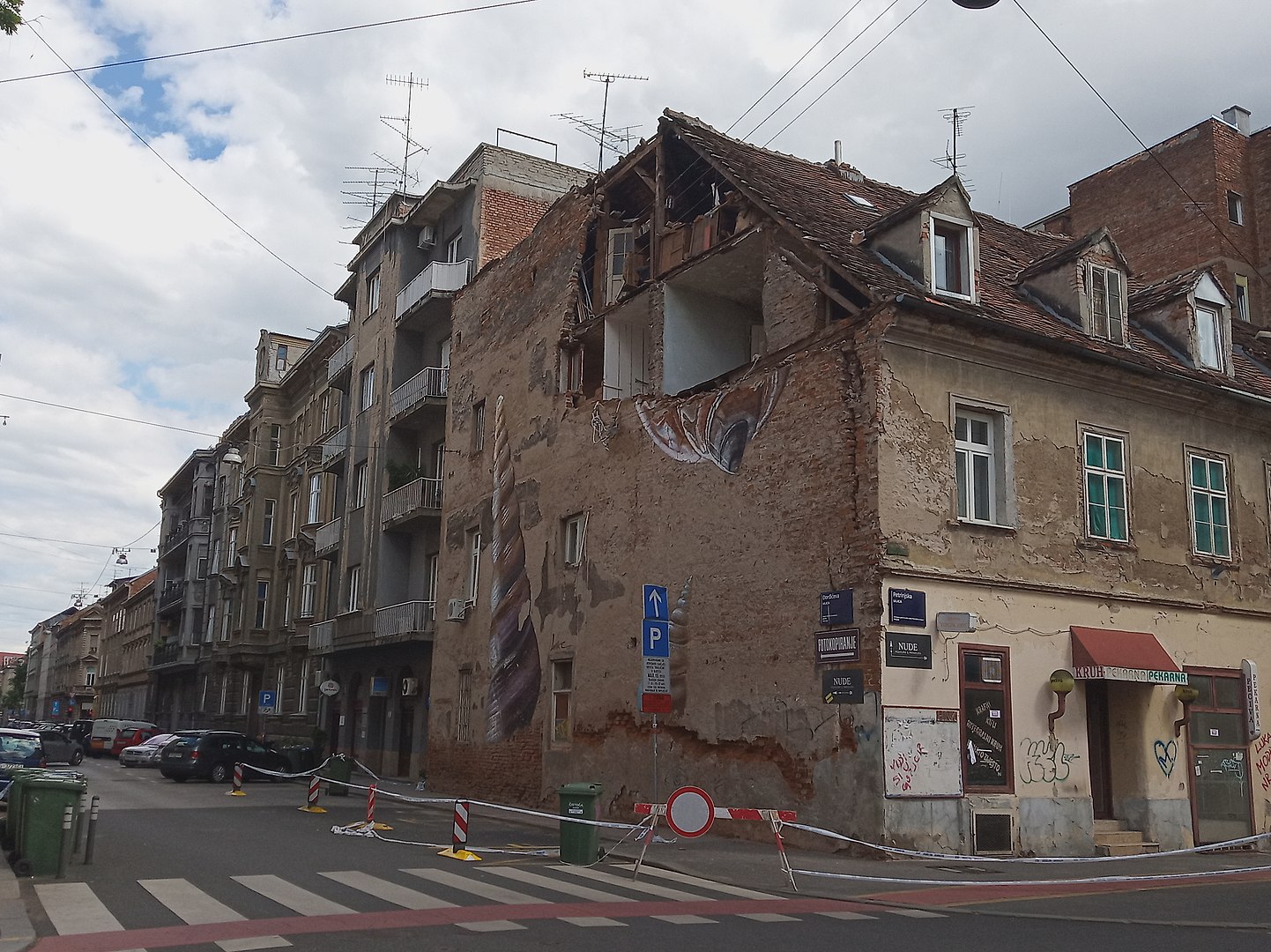 Damage to a Zagreb city-centre building in the 2020 earthquake © Franjo Tahy
Damage to a Zagreb city-centre building in the 2020 earthquake © Franjo Tahy
The tragic news of a fatality filtered through the media several hours later, as did pictures of the devastation visited upon the Croatian capital's buildings. Some of its oldest were hit particularly hard. However, most modern constructions had emerged largely unscathed. Acknowledging the area's seismic capabilities, everything built after the 1963 earthquake of Skopje in neighbouring Macedonia had been constructed to withstand such force.
Offers of help soon began to arrive from overseas. Despite international struggles related to Coronavirus, many still had sympathy upon hearing of the Zagreb earthquake. This outside sympathy and the media that prompted it were rarely directed to the semi-rural communities which experienced the earthquake's fiercest force. The front of the town church in Čučerje, surrounded by scaffolding seven months after the earthquake
The front of the town church in Čučerje, surrounded by scaffolding seven months after the earthquake
The small town of Čučerje is just short of 11 kilometres to the north-east of Zagreb city centre. In late October, the town looks impossibly pretty – houses perched in the foothills of Mount Medvednica, surrounded by greenery and trees exploding in a myriad of autumn shades. But, behind the colourful exterior lies a hidden suffering.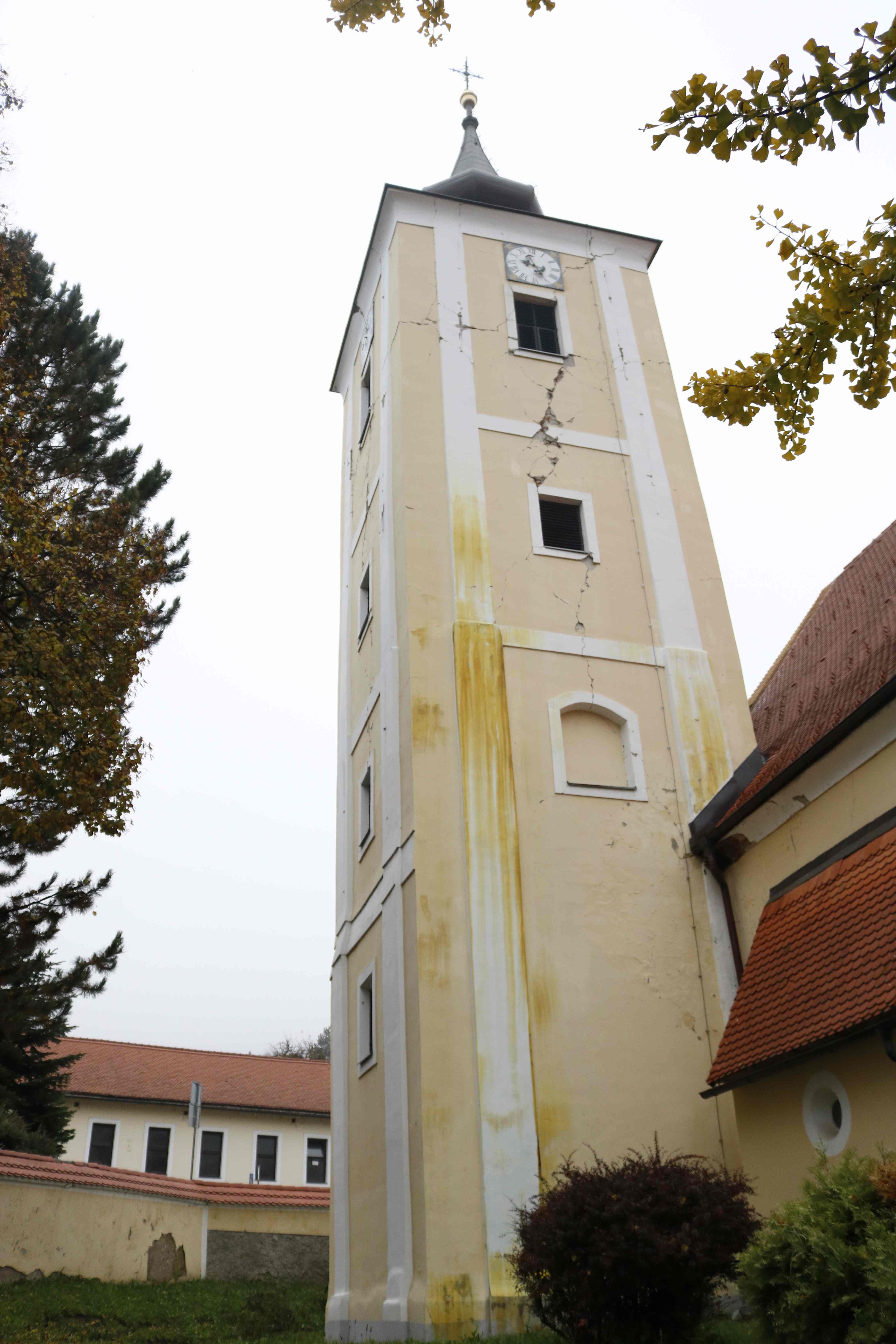 The spire of Čučerje's church is scarred on all sides by long-veined cracks
The spire of Čučerje's church is scarred on all sides by long-veined cracks
Čučerje lies just 500 metres from the epicentre of the earthquake. Scaffolding bolsters the town church, its spire scarred on all sides by long-veined cracks. Back from the main road, down simple, country lanes, sit houses much older than those standng proud above the centre. Here, life still exists in a way similar to that of the original residents of such dwellings. Elderly neighbours are preparing to heat their homes by wood-fired burners, chasing away the chill seeping in through the cracks the earthquake has left. As winter approaches, such hardships are not always reported as loudly as those faced by the damaged cultural institutions holding priceless collections in the capital. But, the struggle does not go unnoticed by Zagreb Volunteers Centre (VCZ).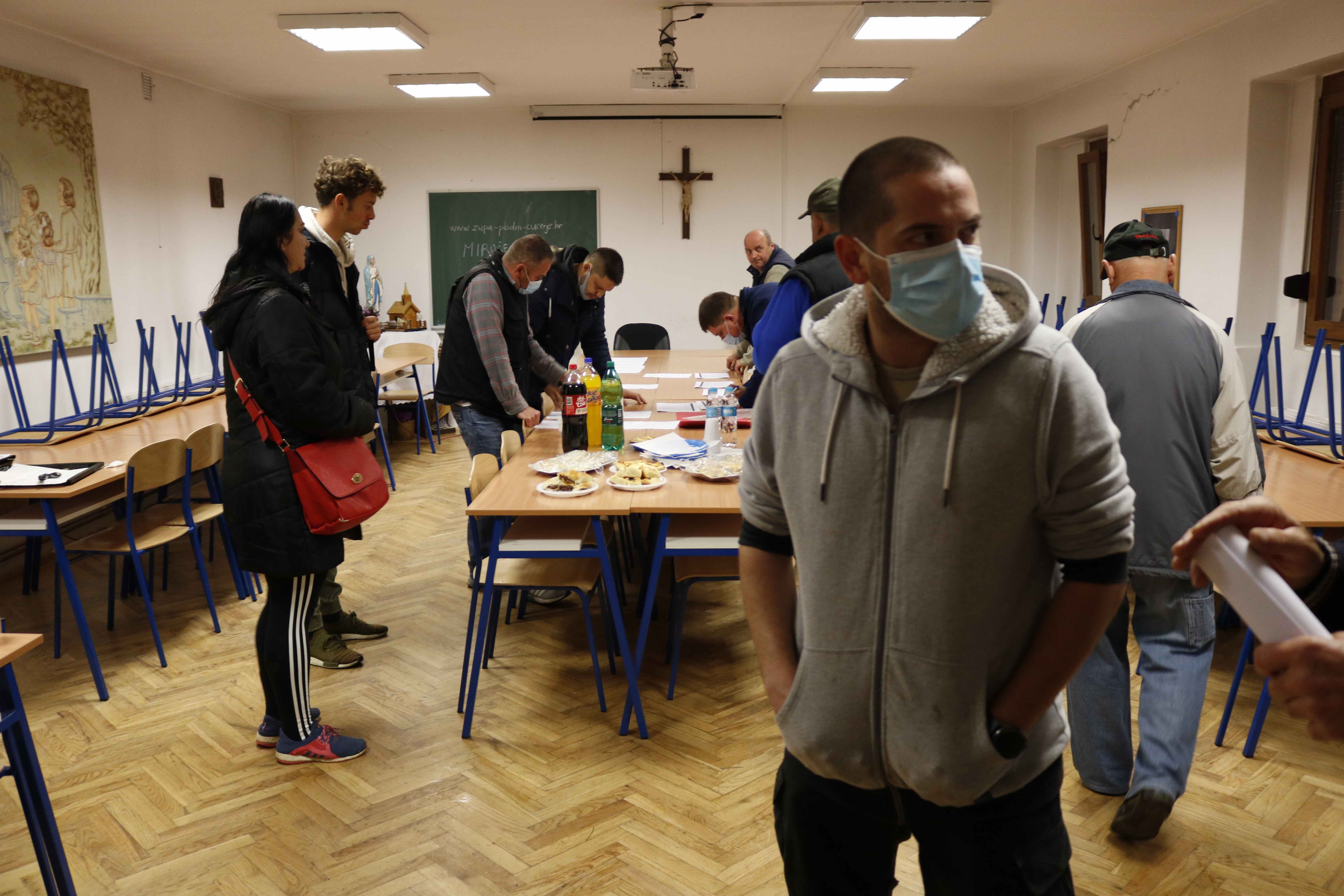 Čučerje residents and members of Zagreb Volunteers Centre meet in the community centre to plan the day's action
Čučerje residents and members of Zagreb Volunteers Centre meet in the community centre to plan the day's action
Established in 1998, Zagreb Volunteers Centre acts as a conduit between charities, communities and non-profit organisations who need support and those willing to donate their time to good causes. Since it was formed, over 18, 000 people have submitted their names to the centre as potential Zagreb volunteers who may be called upon. The centre has helped over 700 organisations find Zagreb volunteers.
“Before 1996, there was a set-up that facilitated international volunteering - it helped connect Croatians with international actions that were looking for help,” says 28-year-old Dunja Hafner, who works for Zagreb Volunteers Centre. “But, it was noticed that some people couldn't commit to an overseas trip and that others simply just preferred only to volunteer locally. The logical step was to move into facilitating that.”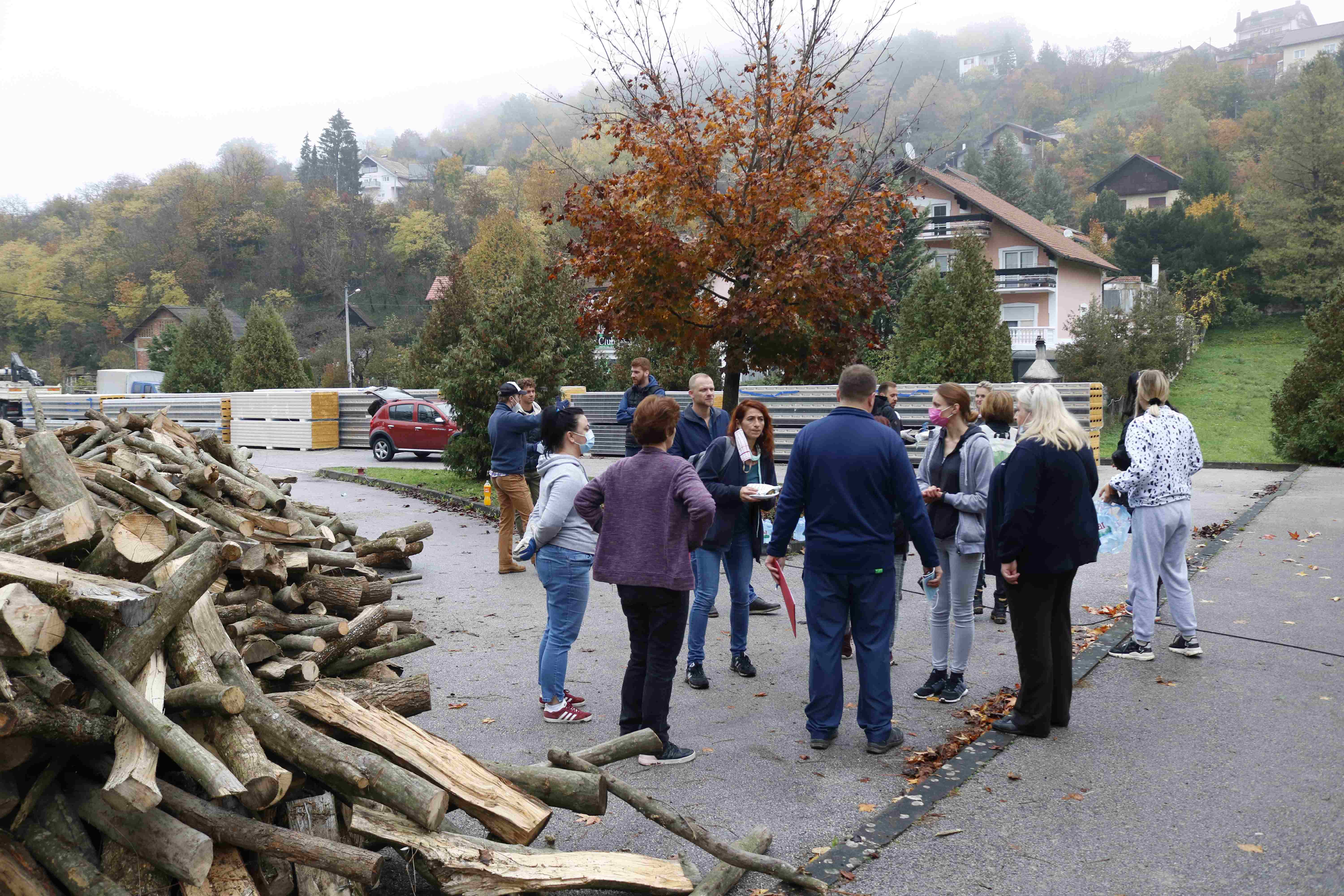 Zagreb volunteers gather in the early morning mist
Zagreb volunteers gather in the early morning mist
“Since we started, the numbers of Zagreb volunteers in our database has grown steadily. But, over more recent times, volunteering does seem to have become a more popular thing to do. And, many people have put their names forward for volunteering since the advent of the earthquake. In the immediate aftermath, there were so many people volunteering that we had to just direct people to the specific groups who were appealing for help. We even had to turn down some Zagreb volunteers who offered their time. That had never previously happened in the history of the organisation. Now, we are managing better and we help co-ordinate some of the actions ourselves.”
“Before the earthquake, the main volunteering areas to which we would send people were actions for children, the elderly, events like culture, sports and music festivals, animals, ecology projects and nature conservation.”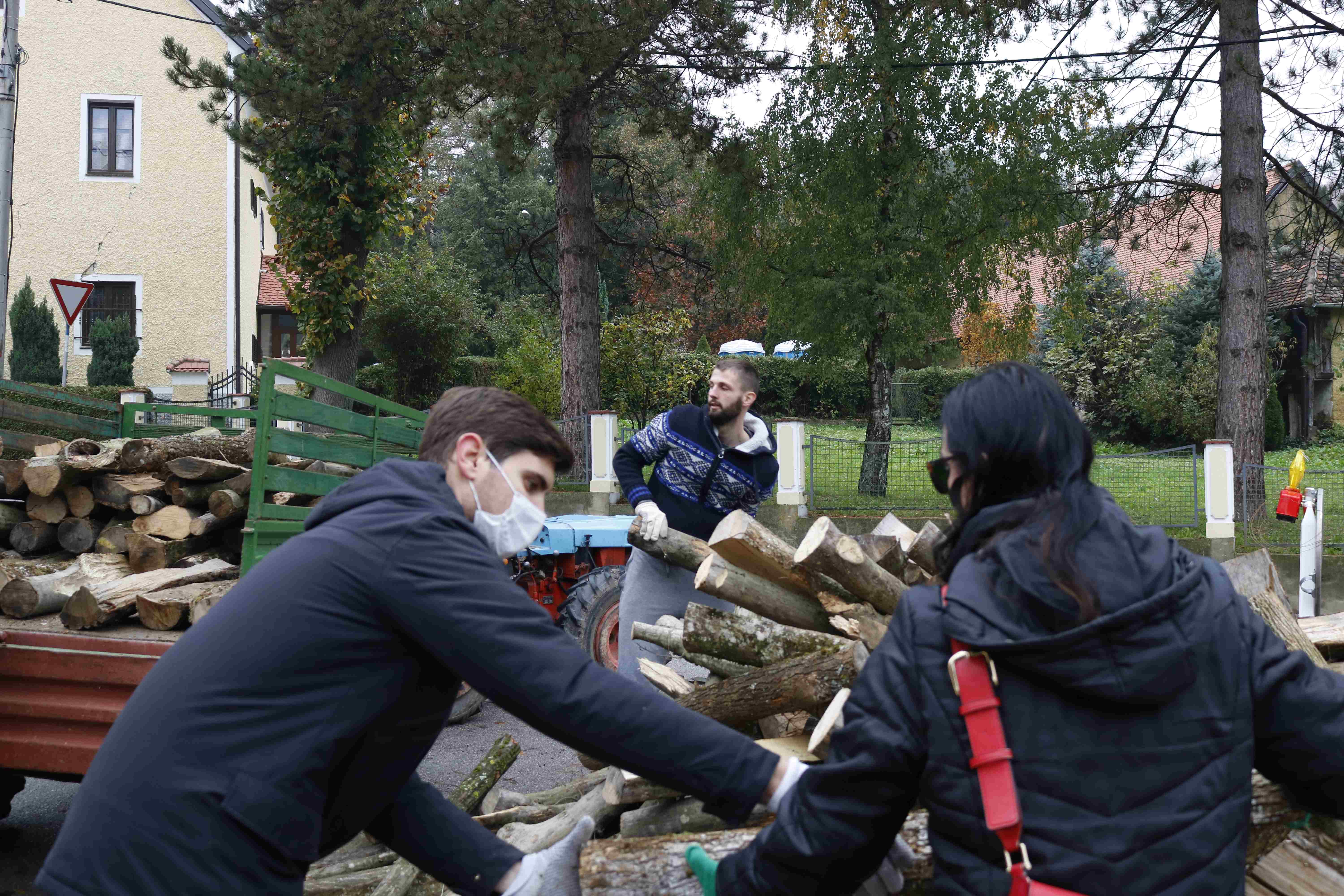 My name is Dražen Blažević (centre), I was born in Croatia. My mother and grandparents are all from Zagreb. This is the city where I live. At the moment, I don't have regular employment, so I can afford to give my time to an action like this. While I'm looking for a full-time job, I make ends meet by doing food deliveries on my bicycle. Why am I here today? Honestly, it was only two weeks ago that I just had this feeling that I should give my time to help people. In one minute I decided I would volunteer. Before this, the kind of help I would give was only to my neighbours, the elderly relatives of friends. People like that. As an official volunteer, this is my first time. Maybe this sounds a little selfish, but I thought it would make me feel good.
My name is Dražen Blažević (centre), I was born in Croatia. My mother and grandparents are all from Zagreb. This is the city where I live. At the moment, I don't have regular employment, so I can afford to give my time to an action like this. While I'm looking for a full-time job, I make ends meet by doing food deliveries on my bicycle. Why am I here today? Honestly, it was only two weeks ago that I just had this feeling that I should give my time to help people. In one minute I decided I would volunteer. Before this, the kind of help I would give was only to my neighbours, the elderly relatives of friends. People like that. As an official volunteer, this is my first time. Maybe this sounds a little selfish, but I thought it would make me feel good.
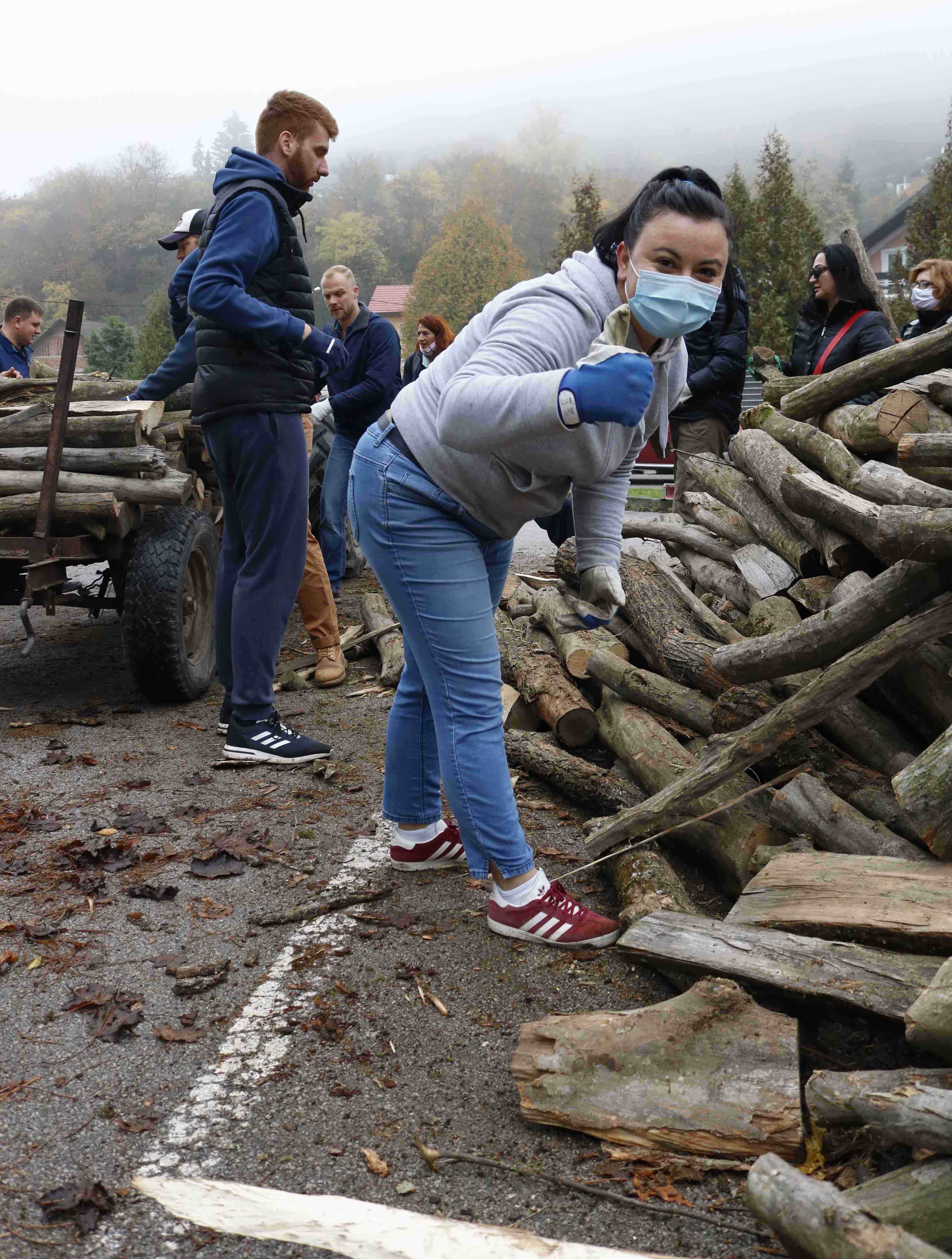 My name is Alexandra and I am from Čučerje. I live here with my family. Right now, I am without a full-time job, so I take on some other daily obligations – I accompany kids to kindergarten and school, and I help out in our local church. I look after their social media pages for them. I also play the organ in the church. It was a very simple decision for me to join in with today's action – I live here. I walk past the devastation left by the earthquake every day. This town has experienced lots of problems because of the damage. For me, giving my time today is a way of showing the love I have for my town and the people who live here. Well, something like that.
My name is Alexandra and I am from Čučerje. I live here with my family. Right now, I am without a full-time job, so I take on some other daily obligations – I accompany kids to kindergarten and school, and I help out in our local church. I look after their social media pages for them. I also play the organ in the church. It was a very simple decision for me to join in with today's action – I live here. I walk past the devastation left by the earthquake every day. This town has experienced lots of problems because of the damage. For me, giving my time today is a way of showing the love I have for my town and the people who live here. Well, something like that.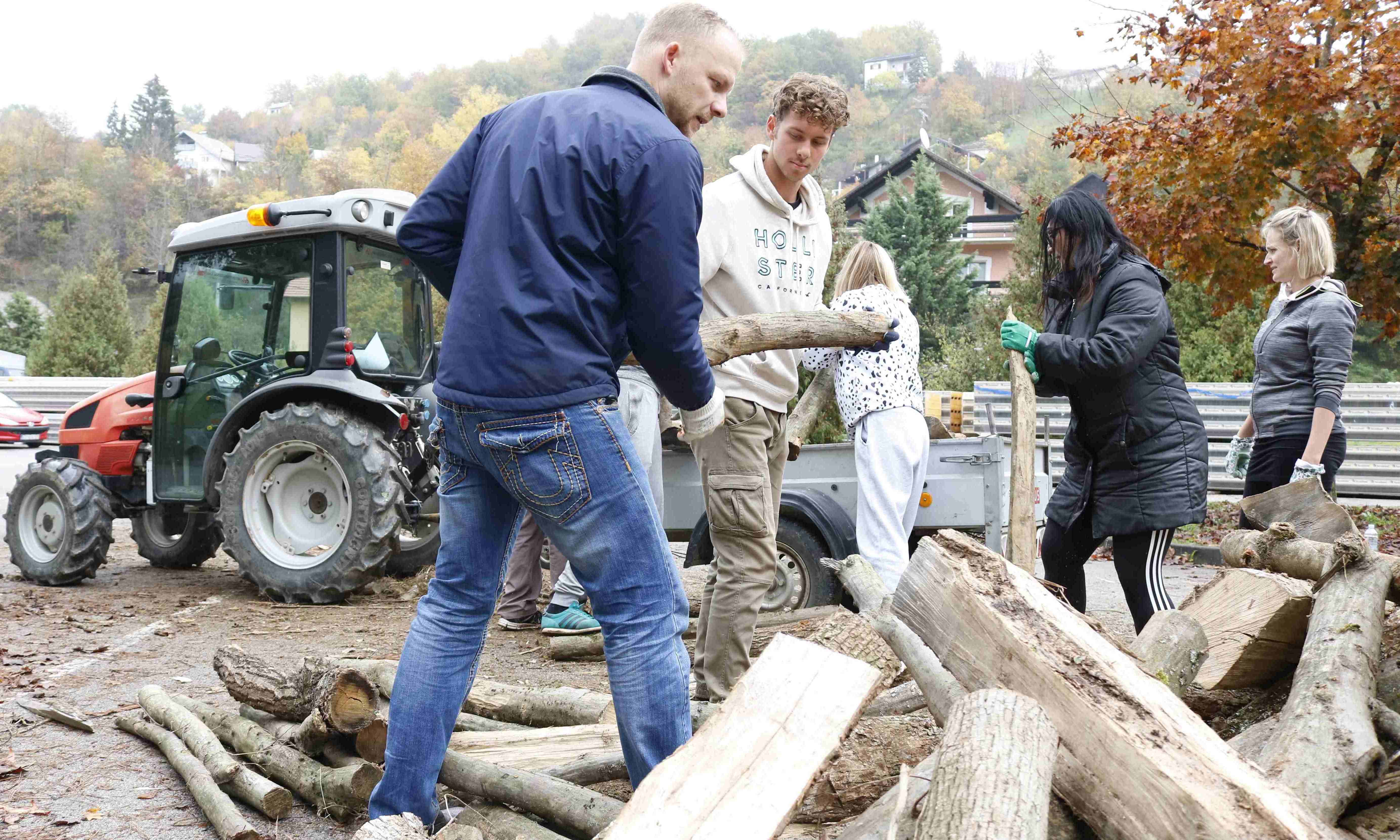
 My name is Borut Babanić (right) and I'm from Zagreb. I work as a project manager. I wanted to volunteer so I could help people. The residents of Čučerje are some of the worst affected by the earthquake and so that's why I want to come here specifically. I wanted them to not feel that they are alone. This is the first time I joined an action via the Zagreb Volunteer Centre.
My name is Borut Babanić (right) and I'm from Zagreb. I work as a project manager. I wanted to volunteer so I could help people. The residents of Čučerje are some of the worst affected by the earthquake and so that's why I want to come here specifically. I wanted them to not feel that they are alone. This is the first time I joined an action via the Zagreb Volunteer Centre.
My name is Antonio Frinčić (left). I'm from Zagreb. I work for the Croatian Foundation For Children. It's an organisation that assists in looking after children and families who have small incomes or limited means. It's a state-funded organisation. My position there is a paid one. This is not the first voluntary work I've undertaken, but it is the first time I have volunteered through the Zagreb Volunteer Centre. My answer is the same as Borut's – I came here because I wanted to help these people.
Borut and Antonio are pictured side-by-side because they spent most of the day working together. When they arrived in the morning, they were strangers. They left as friends.
 My name is Marina Krolo and I'm originally from Split. I studied in Zagreb, finished university here and then stayed. My regular role in society is that I'm a tour guide and tour leader. That pretty much means that this is my year off, ha! There's not much work for a tour guide in 2020, so I'm trying to put my free time to good use. This is the first time I've volunteered through Zagreb Volunteer Centre.
My name is Marina Krolo and I'm originally from Split. I studied in Zagreb, finished university here and then stayed. My regular role in society is that I'm a tour guide and tour leader. That pretty much means that this is my year off, ha! There's not much work for a tour guide in 2020, so I'm trying to put my free time to good use. This is the first time I've volunteered through Zagreb Volunteer Centre.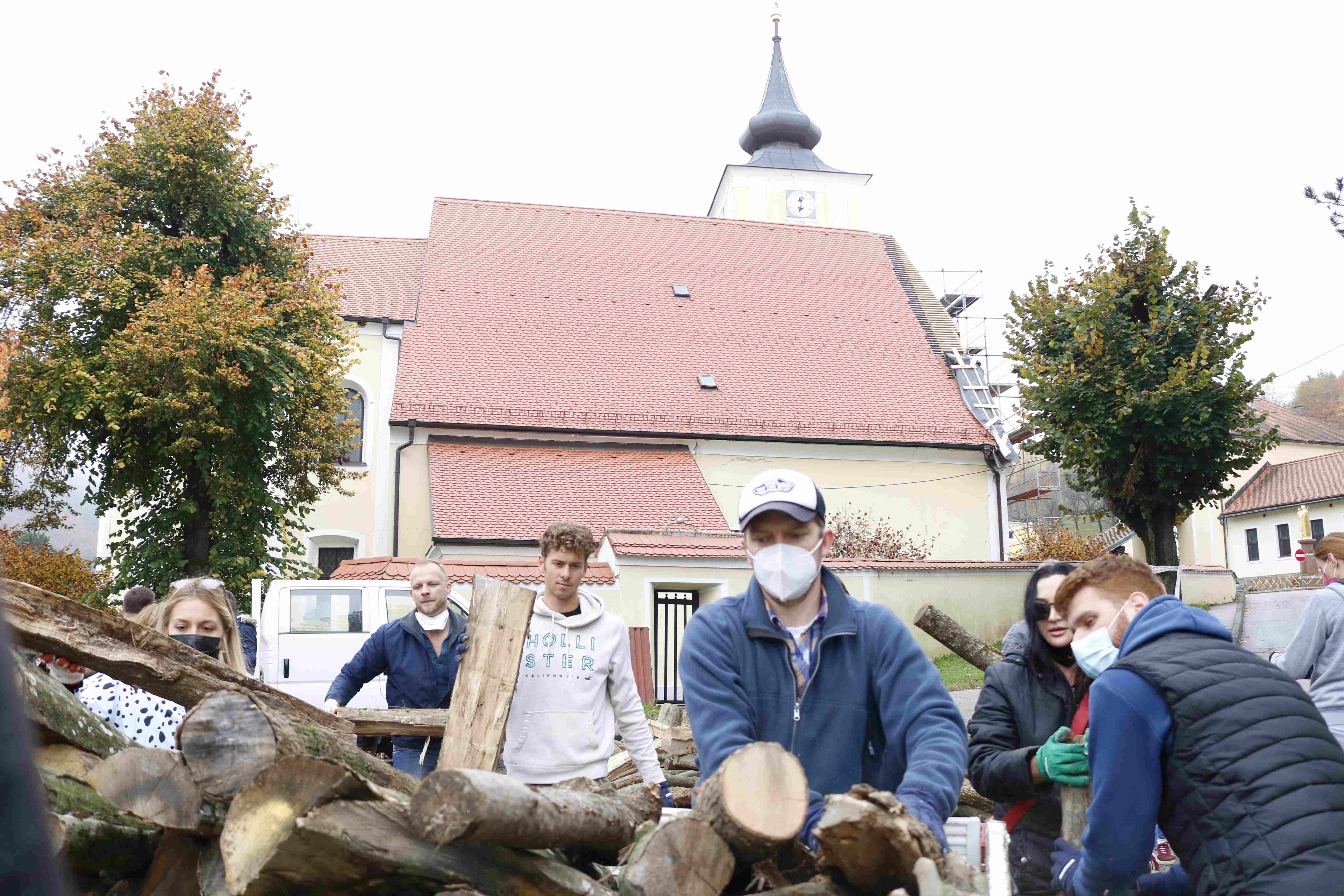
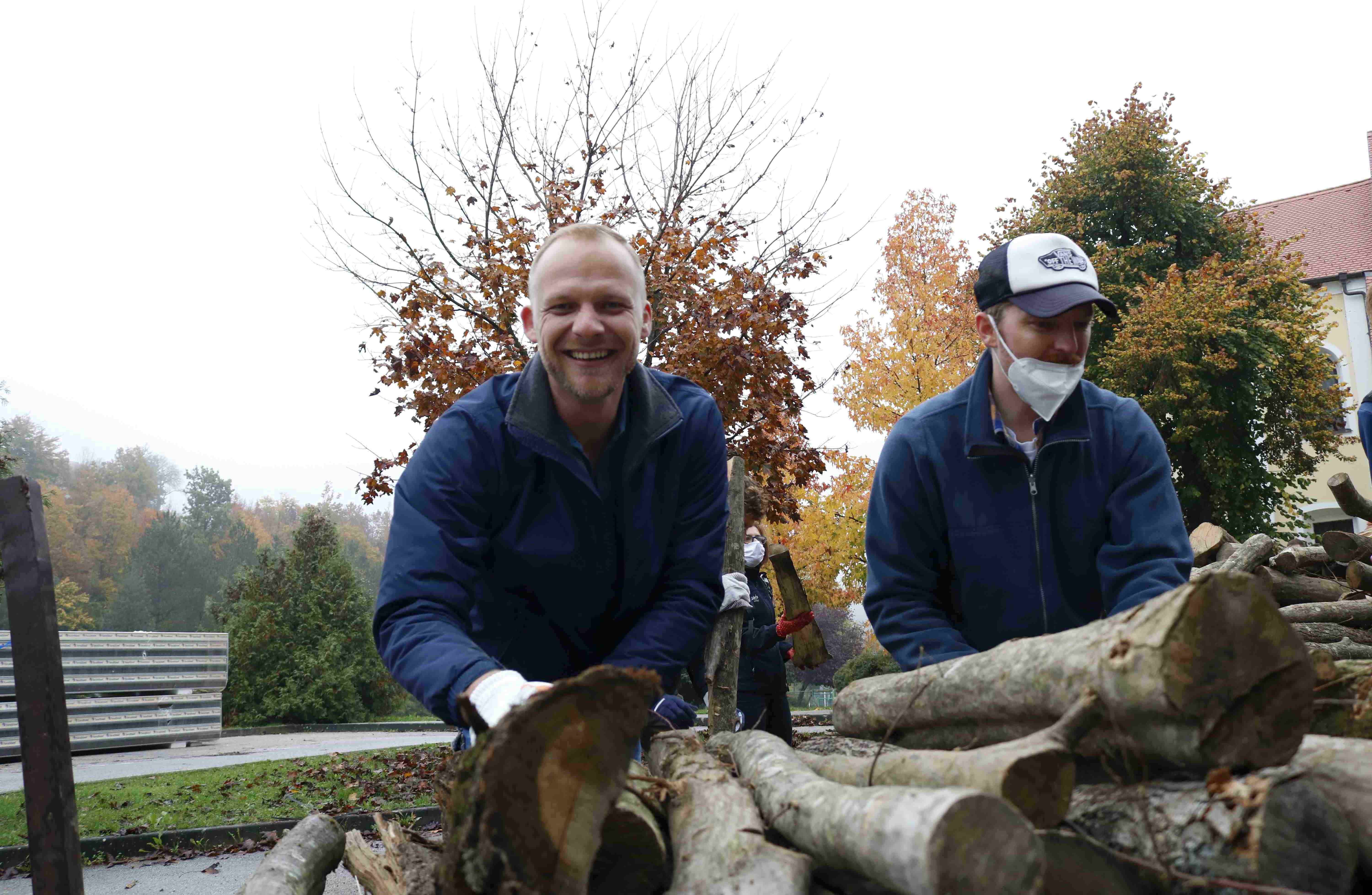 My name is Vincent Matijaca. I was born in Split. I'm based in Zagreb now. We opened a company BioCro LTD in the United Kingdom a few months ago. What we're trying to do is assist small producers and OPGs from this region to place their products internationally, including the UK and other countries in Europe. Why am I here today? Well, we believe that you can't start promoting sustainability and help solely from the office, we believe our project to be more hands-on. By doing that we hope to be able to show what we're about, and to set an example that perhaps others will follow. We've previously joined actions through other Croatian volunteer organisations and others internationally, but this is the first time we've done so through Zagreb Volunteer Centre.
My name is Vincent Matijaca. I was born in Split. I'm based in Zagreb now. We opened a company BioCro LTD in the United Kingdom a few months ago. What we're trying to do is assist small producers and OPGs from this region to place their products internationally, including the UK and other countries in Europe. Why am I here today? Well, we believe that you can't start promoting sustainability and help solely from the office, we believe our project to be more hands-on. By doing that we hope to be able to show what we're about, and to set an example that perhaps others will follow. We've previously joined actions through other Croatian volunteer organisations and others internationally, but this is the first time we've done so through Zagreb Volunteer Centre. Local people from Čučerje and the surroundings had prepared food to make sure the volunteers didn't go hungry. This dish was made and donated by a local hairdresser. It is a local speciality called tenka gibanica. It was delicious.
Local people from Čučerje and the surroundings had prepared food to make sure the volunteers didn't go hungry. This dish was made and donated by a local hairdresser. It is a local speciality called tenka gibanica. It was delicious.
 My name is Tomislav Vlajčić and I'm from Zagreb. At the moment, my regular time is spent studying economy and training football. I'm the team leader of a faculty-related group Tourism Lab that's interested in that area of our economy. This is my first time volunteering. I decided to come because it's a good opportunity to help people who are in need and I'm really glad I came. The experience was really worth it and meeting new people, seeing a slightly different culture is priceless. I would recommend it to anyone because it all starts with us.
My name is Tomislav Vlajčić and I'm from Zagreb. At the moment, my regular time is spent studying economy and training football. I'm the team leader of a faculty-related group Tourism Lab that's interested in that area of our economy. This is my first time volunteering. I decided to come because it's a good opportunity to help people who are in need and I'm really glad I came. The experience was really worth it and meeting new people, seeing a slightly different culture is priceless. I would recommend it to anyone because it all starts with us.
For the latest travel info, bookmark our main travel info article, which is updated daily.
Read the Croatian Travel Update in your language - now available in 24 languages.
When Starts Christmas In Croatia? Decorations Go Up Early Autumn
September 29, 2020 – One surprised shopper couldn't help but laugh and photograph as telltale signs of Christmas in Croatia appeared this week over her local supermarket
As long had been suspected by city residents, it has been officially announced that Zagreb's world-famous Advent celebrations will this year go ahead. Replanned under epidemiological guidelines, kućice (small vending houses), stages and spectacular lights will once again bring the sights, scents, sounds, tastes and cheer of the festive season to the capital this December.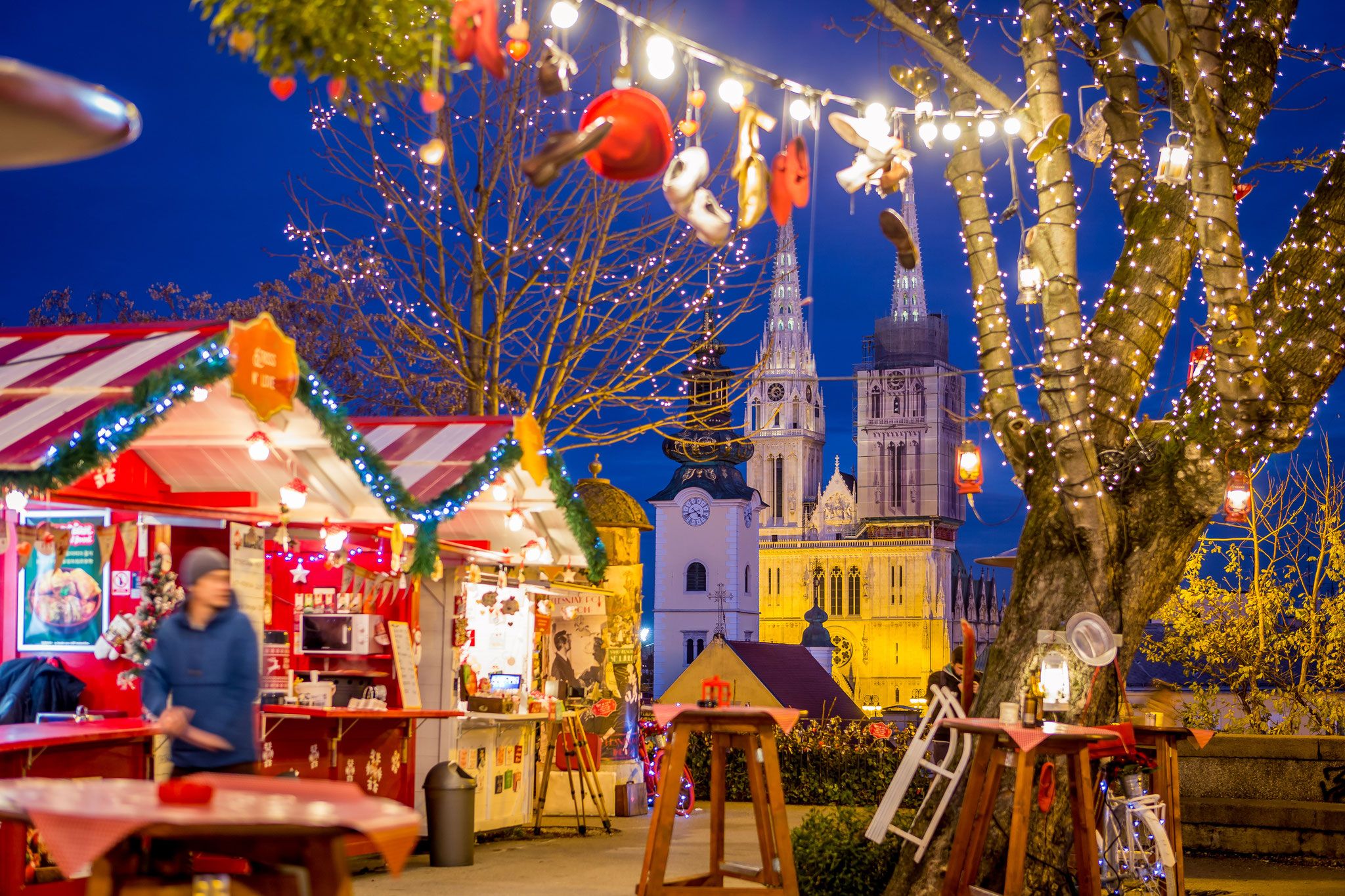 Advent in Zagreb © Julien Duval
Advent in Zagreb © Julien Duval
In the era of Coronavirus, you might be able to ask people to be a bit quieter on their nights out, but there is absolutely no chance you can hold back Christmas in Croatia.
With Zagreb Advent now lasting for over one month - from the last day of November to the end of January's first week - the festive season is already stretched quite far, perhaps reflecting just how much residents enjoy Christmas in Croatia. But, this year, the marking of Yuletide has started earlier than ever before.
The setting of the late summer sun seems to have been the signal for one supermarket to begin bringing in the Christmas cheer. One surprised shopper couldn't help but laugh and photograph yesterday when she saw that Christmas decorations had already appeared over her local supermarket in Dubrava, east Zagreb. It is only the first week of autumn. If you are invited into someone's home over Christmas in Croatia, you simply must go - the atmosphere and food are usually fantastic © Pictureday
If you are invited into someone's home over Christmas in Croatia, you simply must go - the atmosphere and food are usually fantastic © Pictureday
Christmas in Croatia is an excellent time to visit. Zagreb's Advent has consistently been voted the best of its kind across Europe. The season of goodwill in the country is one where gifts are exchanged, homes visited, feasts shared and superb culture enjoyed. As a Catholic nation with a strong sense of family, it is also a time where religion is observed and when you get to see all of your relatives. Many visitors to Christmas in Croatia are lucky enough to be invited into the home while they are here, and such an opportunity should not be turned down. Being among family members and friends, eating traditional and homecooked Croatian food is an unforgettable Christmas experience. But, there are some rules.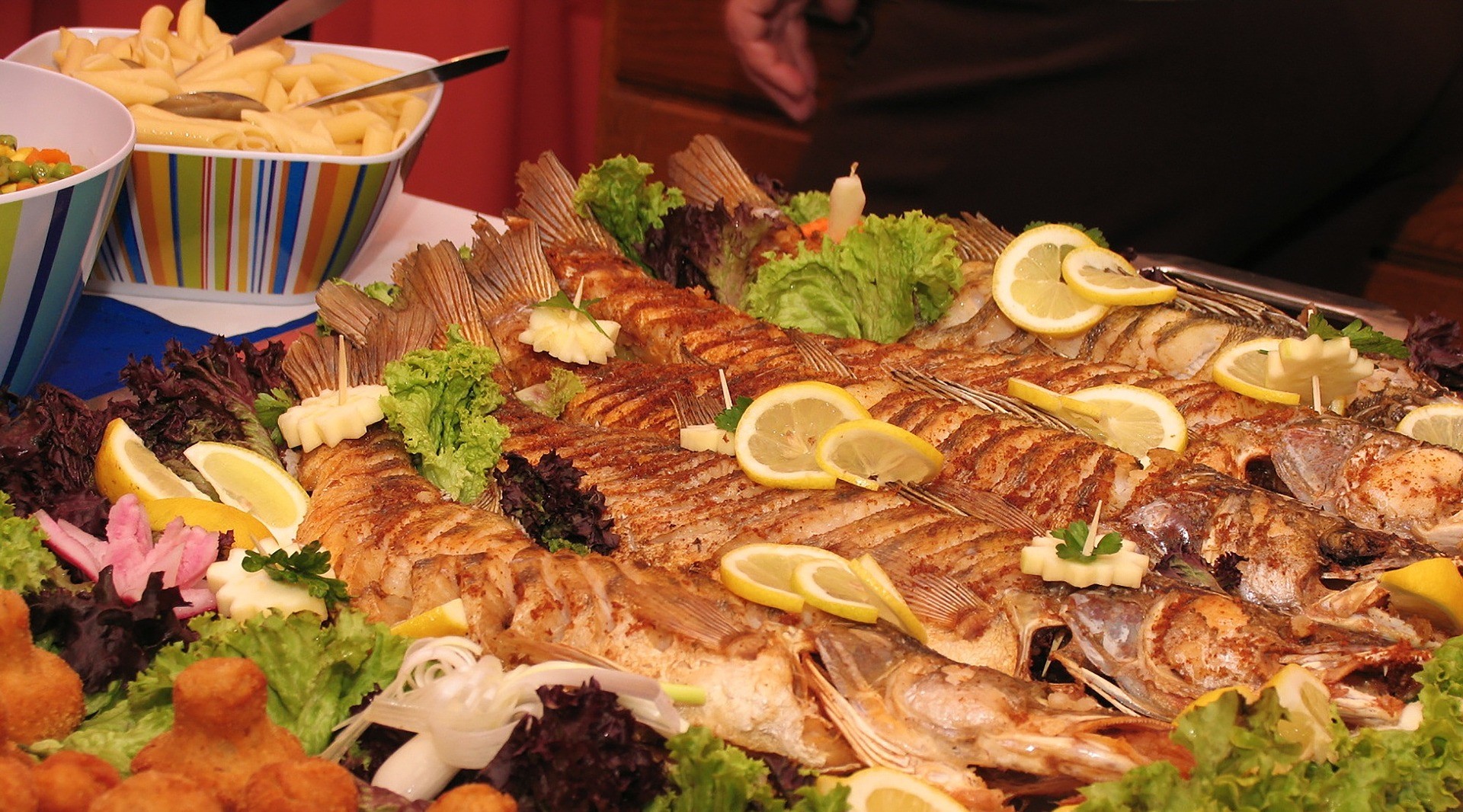 Religious tradition is an integral part of Christmas in Croatia. In almost every home, no meat, only fish, is eaten on Christmas Eve © Vargazs
Religious tradition is an integral part of Christmas in Croatia. In almost every home, no meat, only fish, is eaten on Christmas Eve © Vargazs
In the UK, it's very common to greet friends across many days of December with “Merry Christmas”. You don't do that in Croatia. If you do, you'll be met with a look that lies anywhere between confusion and concern for your mental health. The greeting of “Merry Christmas” is strictly reserved for Christmas Day itself.
The root of this adherence to tradition is doubtless the acknowledgment that Christmas in Croatia is, above all, a religious festival. Croatians are often more attuned than most to commercialism creeping into what remains a deeply-observed marking of Jesus's birth. Yet, somehow, this most sacred of Catholic holidays manages to comfortably sit, side by side with seasonal celebrations that extend further each year. Although, the first week of autumn as the start of Christmas in Croatia must be the earliest one yet.
For the latest travel info, bookmark our main travel info article, which is updated daily.
Read the Croatian Travel Update in your language - now available in 24 languages
In Croatia Public Art Is Destroyed And Replaced With... Nothing
July 17, 2020 – Zagreb's residents have voiced outrage at the removal of a beloved work of art, replaced by nothing. But is this really anything new for Croatia Public Art?
Over the last 24 hours, residents of Zagreb have voiced their outrage at the removal of one of the city's best-loved pieces of street art. 'The Little Prince' had sat in Čulinečka ulica in the Dubrava neighbourhood since 2016. But now it is no more.
Inspired by French writer Antoine de Saint-Exupéry's children's novel - one of the world's best-selling and most-translated books – the mural was placed at the end of a busy underpass. As such, it was a colourful piece of Croatia Public Art, a welcome for motorists entering the drab, grey concrete of the city, stuck in traffic, on their way to another grueling day of work.
Updates to the story have revealed the culprits to be fans of the local football team, Dinamo Zagreb. They had been given permission to paint yet more murals of their logos and slogans on the rest of the underpass, under the provision – according to neighbourhood authorities who granted it – they did not touch the existing artwork. But they did. Where once was placed an inspiring and cheering mural, there now sits nothing.
Representatives of the largest organised group of Dinamo supporters – known as Bad Blue Boys – have, at the time of writing, failed to comment on the affair. Perhaps they weren't aware of the Dubrava sect's actions? They certainly don't appear capable of reprimanding their own members. So much for claiming to be 'organised'. Or perhaps they're just exhausted by all the bad press?
In recent memory, the Bad Blue Boys have repeatedly hit the headlines and, to be fair, not always for such reprehensible, thoughtless behaviour. Following Zagreb's 2020 earthquake, supporters came together as some of the first responders at the scene of a hospital, where they assisted in removing infants from the damaged wards. Bravo! But, then young supporters were pictured with a banner bearing the scandalous words “We will f*ck Serbian women and children”
Representatives from the Bad Blue Boys were quick to denounce the disgusting banner. Bravo! However, they implied the wording was only problematic as it pertained to pedophilia. Eek. And, within 24 hours, the same voices were raging about anti-Croat slogans used by Serbian football fans, in that classically Balkan method of argument where you ignore the issue at hand, point somewhere else and say “But, they are much worse!”
With the removal of 'The Little Prince', this time they seem to have gone too far. All but the most insecure and ardent of supporters have turned on the Bad Blue Boys, labelling them hooligans, idiots and selfish. Comments under news items covering the story are filled with angry criticism for the football fans.
“They like to paint themselves as hooligans who we should all fear,” one angry Zagreb resident who wished to remain anonymous, told TCN, “but really they can only paint their retarded logos. They piss all over the city like feral dogs marking their territory. Their murals are already on walls everywhere, why destroy this art? Everyone loved it! They are not even real football fans, let alone hooligans. They boycotted (attending) because of the club's (allegedly) corrupt management, but as soon as the club released 1 Euro tickets, stadium was again full. For 20 years they shout and spray (paint) fake anger over corruption at the club, but they don't do a thing about it. The same people are still in charge and the stadium is full of these so-called fans. Can you imagine that happening in a football club in your country, in Spain, in Argentina, in Brazil? No. Impossible. Such corruption would not last a year before fans removed them. The corrupt would be assassinated if that's what is needed (to remove them). They are not Bad Blue Boys, they are Big Blue Babies. They are dogs with loud voice but absolutely no teeth”
The anger of Zagreb residents is palpable. But, can we blame the pointless and saddening idiocy of this affair on the Bad Blue Boys? Like the disgusting slogan on the teenage supporters' banner, such rhetoric does not appear out of thin air. Actions like these are sadly learned. And the country has an established history of needlessly destroying Croatia Public Art and replacing it with... nothing.
A photograph of a small section of Ivan Joko Knežević's mosaic in Omiš, the only record in colour remaining of this piece of Croatia Public Art © Knežević family archives
The long-cursed bottleneck on the Jadranska magistrala (Adriatic highway), the Dalmatian town of Omiš, is now fighting to attract the kind of footfall that its neighbours Makarska and Split experience during summer. And, sitting at the mouth of the Cetina river, it sure does have a lot to offer. However, one thing it no longer has to offer is the amazing mosaic created by renowned local artist Ivan Joko Knežević on one of the town's most prominent squares. Today, the square is known as Trg Franje Tuđmana (but, of course it is – it's probably very close to a street called Ante Starčevića too) and where the beautiful mosaic once stood, there sits a blank wall. This piece of Croatia Public Art was removed under a wave of nationalist sentiment following Croatia's war of independence, solely because one of the local scenes it contained depicted Partizan soldiers (who fought to recapture for its inhabitants this very area from the Nazi-allied Italians it had been gifted to). Now, there is no reason for tourists to come to this square other than the drinks on offer. They sit and sip and look at nothing.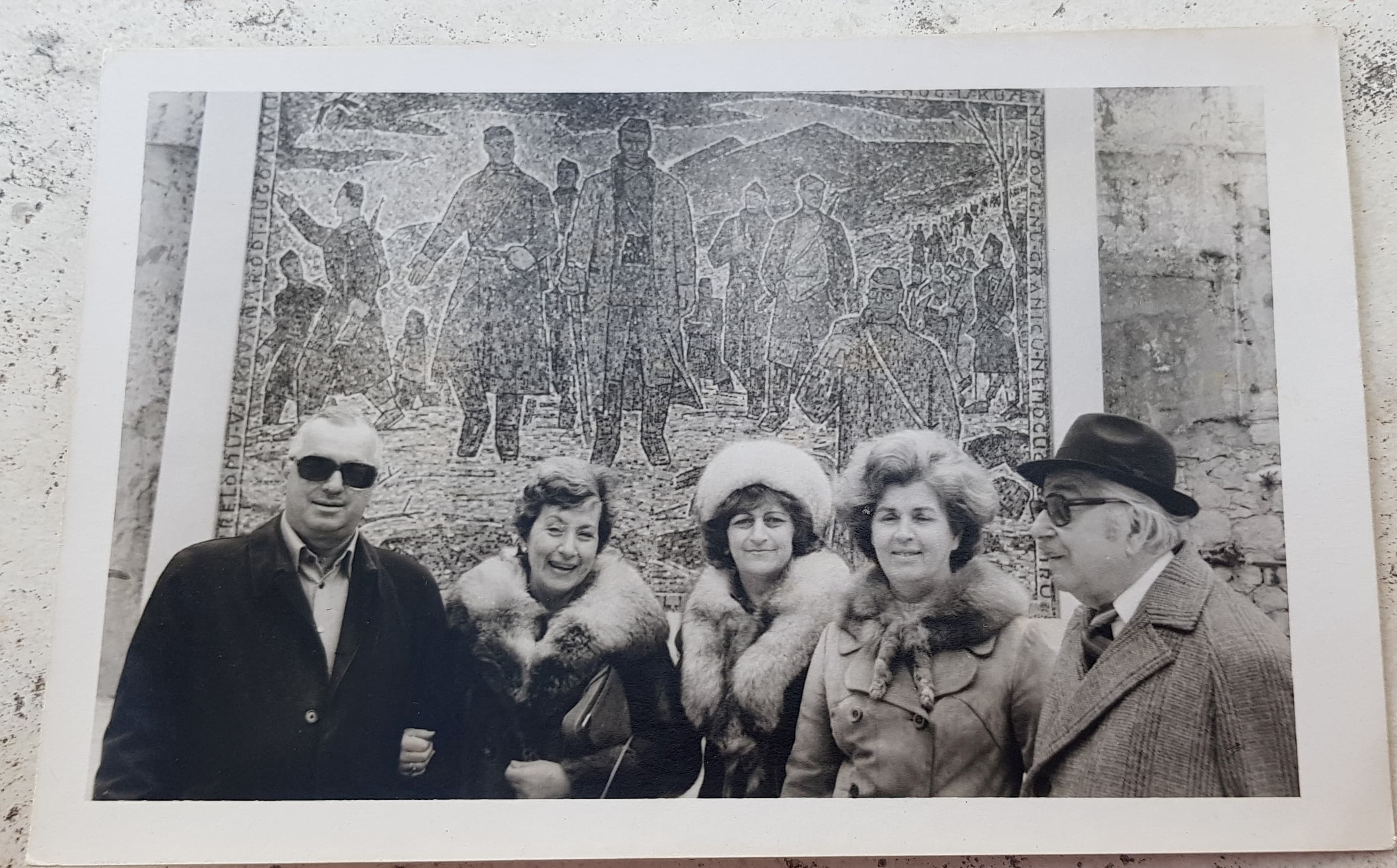
The wife of Ivan Joko Knežević and friends, standing in front of the mosaic in Omiš after the unveiling of this work of Croatia Public Art © Knežević family archives
This is not the only time the work of the rather brilliant Ivan Joko Knežević has undergone such a fate. Croatia's only true master of mosaic operating in the 1950s, 1960s and 1970s, his incredible 'Narod u svojoj težnji k stalnom napretku' mosaic was a proud feature adorning the walls of the former military hospital in Križine, Split until Croatian independence. Thereafter, it sat behind a closed curtain for 15 years until some of the city's more enlightened residents insisted the curtain be removed. Happily, this work of Croatia Public Art is now back on display.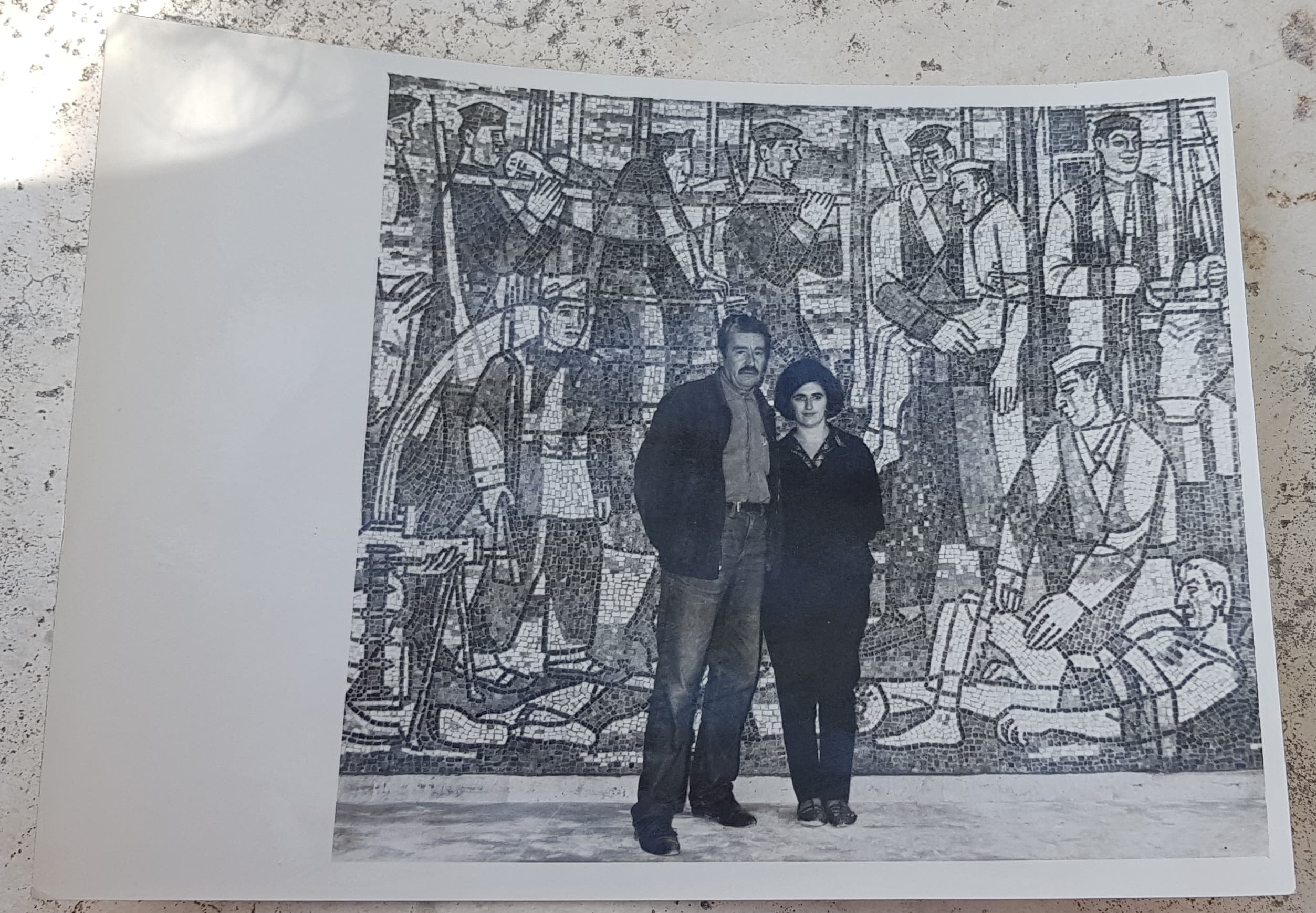
Ivan Joko Knežević standing in front of his Croatia Public Art mosaic at the former military hospital in Split © Knežević family archives
Spomenik narodu-heroju Slavonije (Monument to the hero people of Slavonia) was a former World War II memorial by Vojin Bakić. So gigantic was this stainless steel monolith of gratitude that it took over a decade to build. After completion, it was the largest postmodern sculpture in the world. It took a concerted but incomparable five-day effort by bored soldiers with leftover explosives to destroy it following the end of Croatia's war of independence. Today, such structures of art are recognised and hugely appreciated by many. Fans from all over the world travel to see them. Located in Kamenska, Brestovac, one of the most deprived areas of Slavonia, there is now nothing for the tourists to come and see except the lubenica (watermelon) growing slowly. So, they do not come.
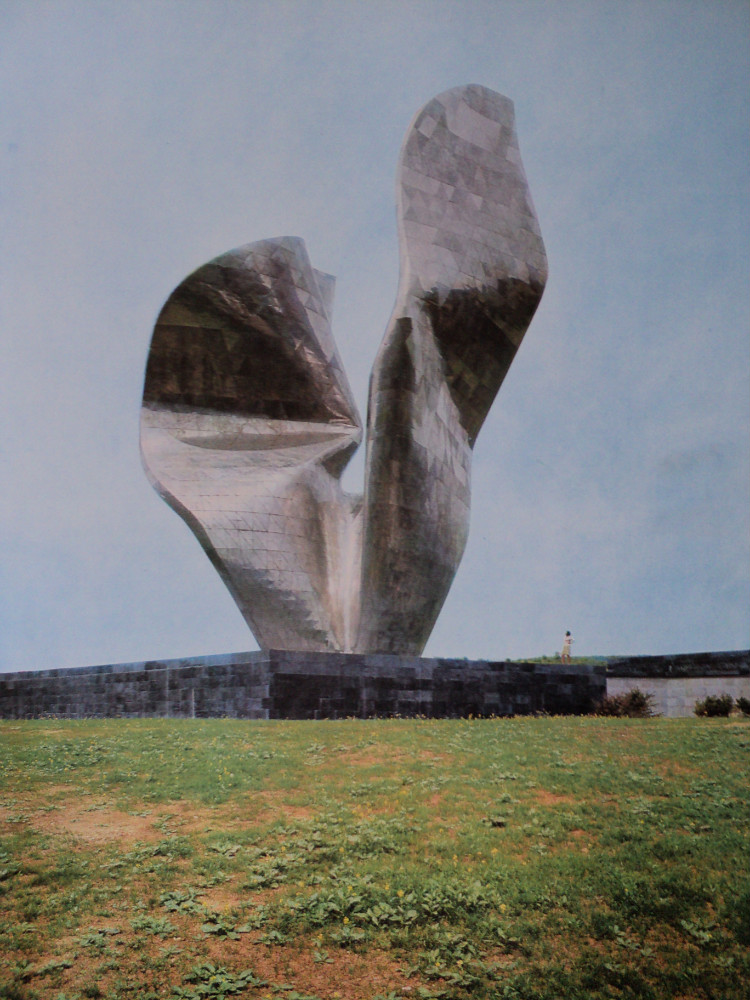
Spomenik narodu-heroju Slavonije (Monument to the hero people of Slavonia) by Vojin Bakić. Built over 10 years, it was the largest postmodern sculpture in the world. It took five days to destroy with explosives © Public domain
Of course, the removal of the latter examples are rooted in a change of regime and political climate. Whether you approve of the recent removal of statues of slave traders in England in response to the Black Lives Matter movement, the famous toppling of Saddam Hussein's statue following the liberation of Baghdad or the destruction of world heritage sites like Palmyra by Isis depends only on your personal perspective and politics. It is all the same thing. The removal of Zagreb's 'Little Prince' just seems like thoughtless vandalism in comparison.
Neighbourhood authorities in Dubrava have promised the return of the much-loved mural, a feat complicated by travel restrictions as its author lives in Novi Sad, Serbia. For now, city residents will look at nothing and curse the shortsightedness of the 'Big Blue Babies' who removed it. But, can they really be so harshly blamed in a country with a history for such wanton destruction of art that is never replaced?
Zagreb Suburb Dubrava Building 42.9 Million HRK Indoor Pool
The Zagreb suburb of Dubrava will be getting a new indoor pool and construction is set to begin in 2020. Here is what the massive complex valued at HRK 42.9m (5.77 Million EUR) will look like.
“We are compensating for the lack of natural light and ventilation of the building by dividing it into three pavilions, which are created by introducing two atriums, where trees will be planted,” the Dubrava pool architects explained to Petra Balija/Večernji List on December 11, 2019.
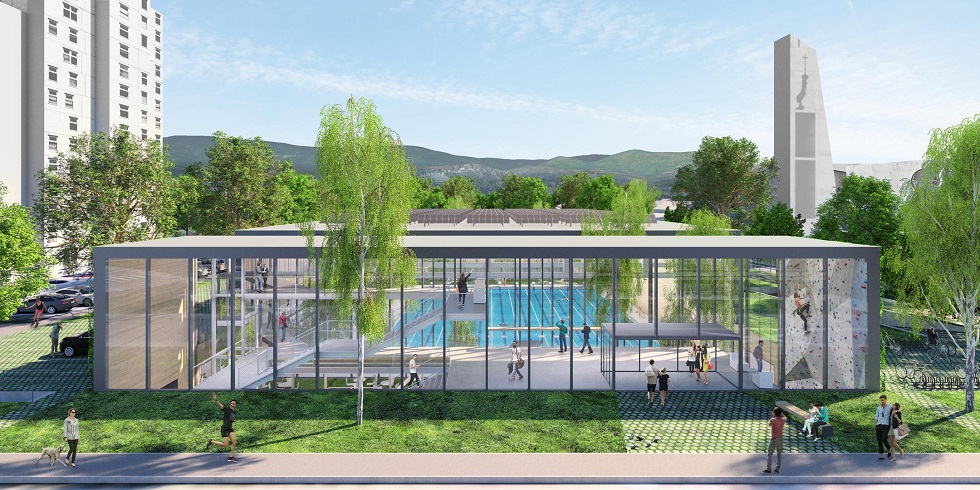
Zagreb Based Radionica Arhitekture Submits Winning Proposal
The pool complex will be nestled between two tall buildings. On one side there will be a 12-story residential skyscraper, and on the other a church with a bell tower that pierces the sky. The location of the future swimming pool in Dubrava, at the corner of Aleja Blaž Jurišića and Križni put ulica, helped dictate the appearance of the building. It was designed by the Radionica arhitekture (Architecture Workshop) team headed by renowned architect Goran Rako. Thirty-three proposals were received in less than two months; the duration of the competition announced by the City of Zagreb. The second prize went to the BIRO Architectural Office and the third to Hrvoje Njirić, Marko Gusić and Irma Šmuc. Construction is expected begin next year, according to reports from the city. The time of year for laying the foundation will be determined in subsequent planning meetings now that the winning proposal has been selected, officials from the Gornja Dubrava district added.
Dubrava Pool Complex Will Have Three Pavilions
Considering that it will be surrounded by taller buildings, the pool building should be as close to the ground as possible, the Radionica arhitekture team thought. Therefore, they designed a low elevation building which will be nestled among taller structures. They will erect "dams", or walls without openings facing east and west, to prevent neighbors from looking in at bathers in the swimming pools.
The Radionica arhitekture team included a "double" cafe on the ground floor of the building, where guests can enter in shoes from the lobby, and bathers can enter through the atrium barefoot or with flip-flops.
“We compensate for the lack of natural light and ventilation within the building by dividing it into three pavilions, which are created by introducing two atriums, where trees will be planted,” the architects point out.

Pool and Locker Room on Subterranean Level
They also wanted to place the pool and locker room on the same floor. Since there wasn’t any space on the ground floor, they solved the problem by lowering both to the subterranean level. In addition to a large sports and recreation pool and a smaller educational and rehabilitation pool, the complex will house a sauna, ballet and choreography hall, 250-person capacity theater, fitness center, breastfeeding area and children’s changing room.
Energy Efficient Design and Water Reclamation System
Putting part of the building underground will enhance energy independence and efficiency, so that building warms up more slowly during summer months and cools down more slowly in winter. In addition, they will install photovoltaic panels, underfloor heating, and a ceiling cooling system. High-efficiency LED lighting will be controlled automatically by the amount of available daylight. Rainwater will be collected from the roof. The complex will also recycle wastewater from showers, washbasins and mechanical structures and use it for flushing toilets and maintaining external surfaces. The estimated cost of the project is 42.9 million HRK (5.77 Million EUR), excluding VAT. This investment will add value and a fresh perspective to the neighborhood, says Damir Oniško, the mayor of the district.
For more information on upcoming architecture competitions and building projects in Croatia, follow our Lifestyle page here.


